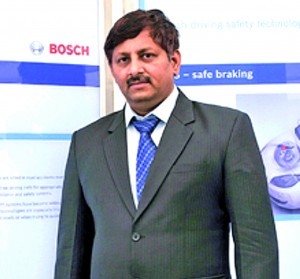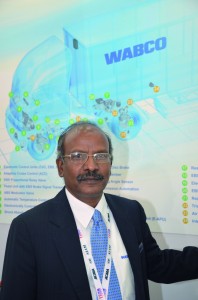Bosch India and WABCO India jointly organised a two-day symposium on ‘Safety Drive’ at WABCO’s proving ground and test track in Chennai on February 5 and 6. The symposium served as a platform for industry bodies, OEMs and media to examine and deliberate on the present state of vehicle safety in India. It also highlighted the available technologies and solutions to improve road safety.

Commenting on the event, Mr. Balasubramanian, Deputy Managing Director, Bosch Chassis Systems India Ltd., said: “The ‘Safety Drive’ symposium is in an initiative to garner the collective effort of all stakeholders who support the cause of improved vehicle safety in India. As a company dedicated to developing technology that is ‘invented for life’, it is imperative that Bosch contributes towards making vehicles safer. It is crucial that critical safety features become a mandatory aspect of any vehicle that plies on Indian roads. The problems and fatalities on Indian roads are very real, and it is imperative that we use available technology and global best practices to make our vehicles safer. And in this endeavour we look forward to the support of OEMs, the Government, industry players and the end users themselves.”
Reinforcing WABCO’s commitment to advance safety and driver effectiveness in commercial vehicles, Mr. P. Kaniappan, Whole-Time Director, WABCO India, said: “Alongside the rapid growth in traffic volumes and transportation routes throughout India, we are facing an alarming growth in the number and severity of road accidents. Partnering on this ‘Safety Drive’ initiative with Bosch offers WABCO a powerful platform to highlight the positive and proven impact of established commercial vehicle safety technologies, including anti-lock braking system (ABS) and electronic stability control (ESC), which have the potential to significantly reduce the number of accidents on India’s roads”.

International experts attended the symposium in large numbers.
Mr. David Ward, Director General of the FIA Foundation for the Automobile and Society, a UK-registered charity that promotes road safety and sustainable mobility, spoke on “The Decade of Action for Road Safety-Global Plan”. Mr. Thomas Lich from Bosch Corporate Research spoke on accident research in India, while Dr. Christian Wiehen, Chief Technology Officer, WABCO, spoke on “Improving Road Safety in India with Commercial Vehicle Control Systems”.
Symposium guests included Prince Michael of Kent (first cousin to Her Majesty Queen Elizabeth II), a patron of the Global Road Safety Commission, and Mr. B. Bhanot, Chairman – TEDC (BIS), an authority on formulation and implementation of safety and emission regulations in the country.
According to the United Nations, worldwide 1.3 million people die in traffic accidents every year, and 50 million are injured. Within 10 years, the number of annual road deaths could go upto 1.9 million, nearly a 50 per cent rise. This is driven mainly by the rapid growth in road traffic in the emerging countries.
The UN has announced 2011-2020 as the ‘Decade of Action for Road Safety’ with the objective of reducing the number of road deaths by 50 per cent. One of the five pillars that the UN has described for this project is ‘Safer Vehicles’. This entails universal deployment of crash avoidance and mitigation technologies such as electronic stability program (ESP), ABS and ESC in commercial vehicles, cars and motorcycles.
According to the latest Road Transport Ministry report, India, with one road accident every minute in 2011 that claimed one life every 3.7 minutes, perhaps has the highest road fatality rate in the world. The need to tackle this issue expeditiously couldn’t have been more pronounced. Keeping in view the urgency to address this problem, Bosch and WABCO, being two of the major providers of vehicle safety solutions to the market, have taken the initiative to collaborate with the automobile industry to discuss possible measures in this direction.